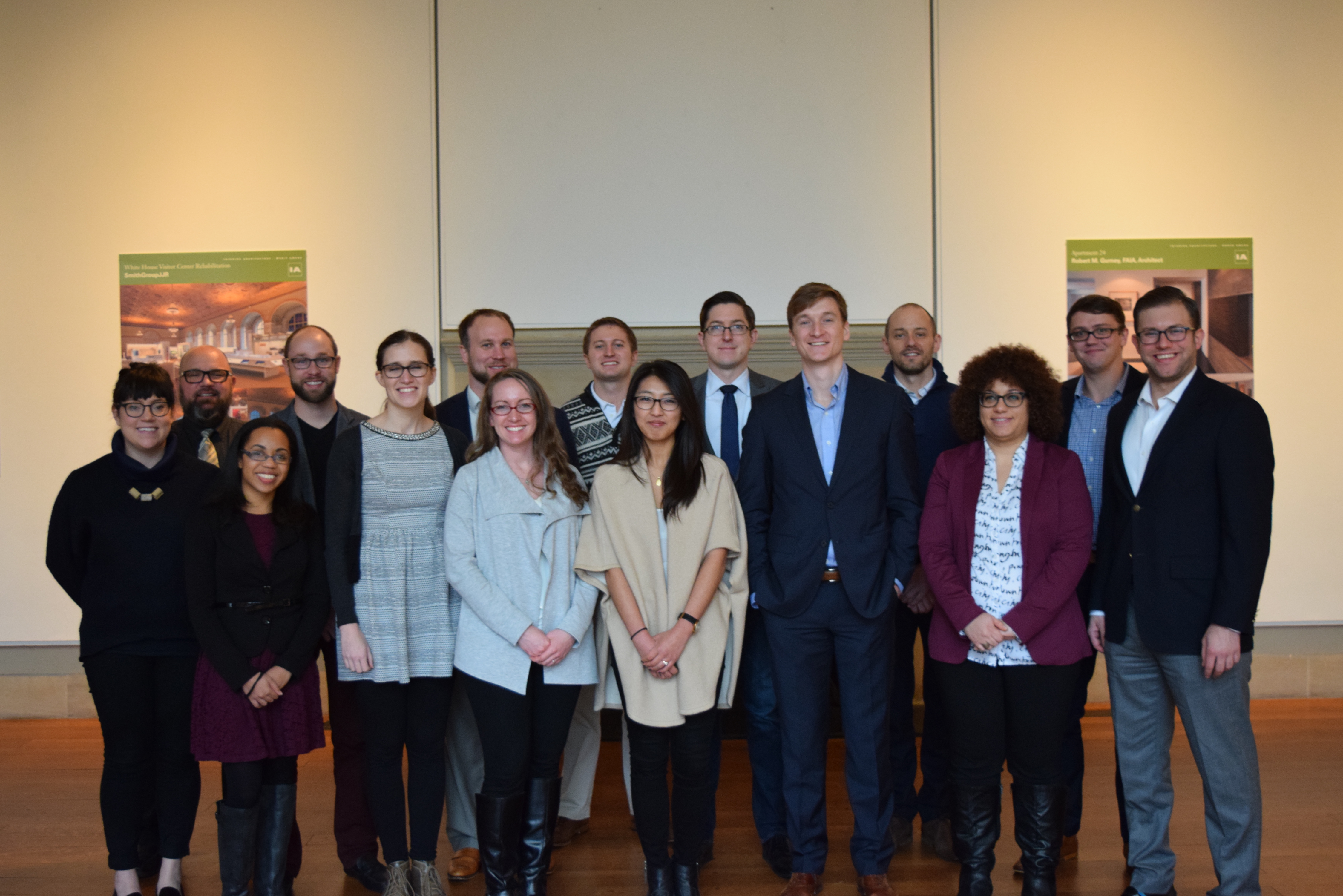
AIA Virginia’s award-winning Emerging Leaders in Architecture (ELA) program was developed to jump-start the careers of young professionals. Conceived of and lead by a passionate steering committee of successful architects, the program was designed to share the things they wished they had learned in architecture school.
Each of the seven day-long-sessions focus on developing essential skills like financial management, communication and negotiation, advocacy and public service, and much more.
Want to be a member of this elite group of leaders? The application for the 2017 class will be available later this summer. Contact Marshall Dreiling for information on how to nominate an emerging leader or with any questions about the program.
We asked members of the ELA class of 2016 the same five questions, take a look at their inspiring answers.
Alexander Cheng
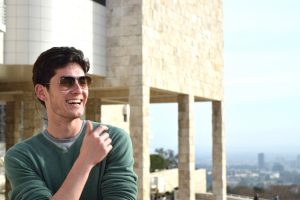
Q: What building evoked a strong reaction from you recently—either positive or negative?
A:“Tulou” structures are found in the village of Xiashi in the Fujian province of China. They are incredibly massive rammed-earth structures that appear monolithic on the exterior, but more amazingly within the tulou, we find a microcosm of a city. The contemporary lifestyle of the village finds its place in the ancient built forms of the past.
Q: What is the last book you read?
A: The last book I read was The Happiness Advantage by Shawn Achor. The essential message of the book is that your happiness precedes your success. It changed my outlook on how to live and how to work.
Q: How did you discover your passion for architecture?
A: I found my passion for architecture in the place where I was raised – in a mid-century modern neighborhood called Hollin Hills, designed by the architect Charles Goodman. The neighborhood is characterized by glass box houses nestled within dense tree canopies, that offers a profound connection between architecture and nature.
Q: What is your favorite thing to do to relax?
A: When I get the chance to relax, I like to play tennis, golf, or run – really any outside activity brings me peace.
Q: What advice do you have for aspiring architects?
A: As an aspiring architect myself, it’s hard to say! But to steal a piece of advice that I took from my college professors, I would say it is important to “learn how to learn.” I think that somehow, you have to keep up a ravenous appetite for learning to have more knowledge to draw from in the practice of architecture.
Alyssa Tope
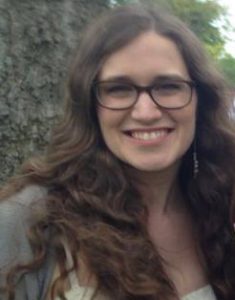
Q: What building evoked a strong reaction from you recently—either positive or negative?
A: I recently learned about Tanner Springs Park in Portland, OR. It was very inspiring to see the designers honor both the ecological and industrial history of the site in a sustainable way. Although it is not a building, this way of thinking will absolutely inform my future projects.
Q: What is the last book you read?
A: Architecture-related: Landscape Urbanism Reader by Charles Waldheim. Non-Architecture-related: Yes Please by Amy Poehler
Q: How did you discover your passion for architecture?
A: I first knew I wanted to be an architect in 5th grade when I was told to design “the ultimate dog house.” Since then, I continue to fall in love with architecture because it gives me the ability to express all facets of my mind. Design allows me to solve problems, be creative, and serve people and the environment.
Q: What is your favorite thing to do to relax?
A: Whether I am hiking or bicycling down a rural road, I am never more relaxed and my thoughts are never clearer than when I am in nature.
Q: What advice do you have for aspiring architects?
A:Working in the studio or the office until 3 a.m. won’t teach you or inspire you nearly as much as a new experience (especially those outside of the architectural world). As author Kent Nerburn wrote, “If we don’t offer ourselves to the unknown, our senses dull, our world becomes small, and we lose our sense of wonder.”
Asher McGlothlin
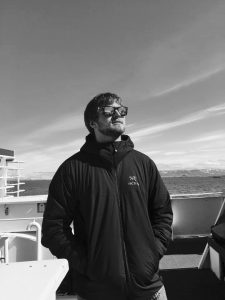
Q: What building evoked a strong reaction from you recently- either positive or negative?
A: The church at Stykkisholmur, Iceland, designed by Jon Haraldsson. The church’s simplicity is comforting and inviting, allowing one to feel at ease upon entering the space.
Q: What is the last book you read?
A: Musicophilia by Oliver Sacks. A great book on music’s effects on the brain. Oliver Sacks pulls inspiration from E.O. Wilson’s hypothesis of Biophilia to propose that human beings have an innate connection and need for music.
Q: How did you discover your passion for architecture?
A: My grandfather was a carpenter and growing up I spent a lot of time helping him with his projects. He has a great eye for design and inspired me to follow in his footsteps.
Q: What is your favorite thing to do to relax?
A: Play music. Being able to focus only on the current moment is the essence of meditation and music is the best route I’ve found to do this. When you really get into a song, and put your all into playing it, it is impossible to focus on anything but the present moment.
Q: What advice do you have for aspiring architects?
A: Follow your heart down whatever road it leads you. It is always wise to listen to those who have more experience than you and to account for their advice in your decisions, but at the end of the day, you are the one who has to live with those decisions. So follow the trail that calls to you. It may be rough at times, but a great story has never been told in which conflict wasn’t present.
Braden Field
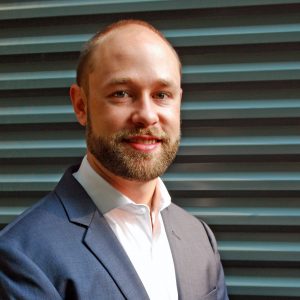
Q: What building evoked a strong reaction from you recently—either positive or negative?
A: Not exactly a building, but I was mesmerized by the Wonder exhibit at the Renwick Gallery in DC earlier this year.
Q: What is the last book you read?
A: The Burglar’s Guide to the City by Geoff Manaugh.
Q: How did you discover your passion for architecture?
A: I’ve always been curious about by how things go together. I was also fascinated by the scale of architecture’s impact on the world and found beauty in good design. Sometime late in high school, I decided that I wanted to pursue architecture as a career, and haven’t looked back since.
Q: What is your favorite thing to do to relax?
A: I love to cook. Preparing a meal from scratch, especially without a recipe, and sharing it with good friends and family is always enjoyable.
Q: What advice do you have for aspiring architects?
A: Don’t wait for the next great project or client, the next better job, or the next promotion – find ways to make whatever you’re working on, wherever you’re working on it, in whatever role you have, the best thing you’ve ever done. Be careful – what you’re working on right now may be the best thing you ever do. Stay curious, and never stop trying to learn.
Brian Gurczynski
Q: What building evoked a strong reaction from you recently—either positive or negative?
A: Pantheon, positively.
Q: What is the last book you read?
A: Code Commentary, I don’t have much time to read these days.
Q: How did you discover your passion for architecture?
A: When I was a kid I liked drawing floor plans of my ideal snowboarding cabin. I must have drawn over 1,000 of them in middle school.
Q: What is your favorite thing to do to relax?
A: Boating
Q: What advice do you have for aspiring architects?
A: Do not let your limited experience intimidate you to provide creative input.
Chris Warren

Q: What building evoked a strong reaction from you recently—either positive or negative?
A: 400 Grove by Fougeron Architecture really made a positive impact on me about how I want to approach façade shape and details in my buildings.
Q: What is the last book you read?
A: The Kaplan Site Planning and Design Study Guide since I am taking my exams right now. But I wish I was reading Plato’s Republic right now.
Q: How did you discover your passion for architecture?
A: I was born this way. Seriously, though, I’ve always wanted to be an architect my whole life, so it wasn’t something I discovered.
Q: What is your favorite thing to do to relax?
A: I like to make things. Recently I restored my Great Grandfather’s dresser into a cabinet.
Q: What advice do you have for aspiring architects?
A: Apply to one of those new programs where you take all the ARE’s in school. Having a job and studying after work is not fun.
Donna Ryu
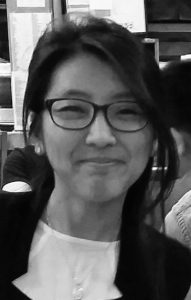
Q: What building evoked a strong reaction from you recently—either positive or negative?
A: Albert Kahn’s Herman Kiefer Hospital in Detroit, Michigan (1954). Positive – Detroit is a historically rich and inspiring city that is rebuilding from the ground up. This historic hospital is one of many being advocated for and anticipated to be preserved and reimagined in Detroit’s efforts to rebuild their urban landscape!
Q: What is the last book you read?
A: The Girl on the Train by Paula Hawkins
Q: How did you discover your passion for architecture?
A: I can’t recall an exact moment where I knew architecture was for me. It has become a profession that fills my curiosity and continues to challenge the way I see & experience the world.
Q: What is your favorite thing to do to relax?
A: I can’t choose just one – watching a good movie or reading a book (or a comic book!)
Q: What advice do you have for aspiring architects?
A: Don’t only do architecture. Be inspired and re-inspired by people, music, film, animation, food, etc.
Janine Stewart
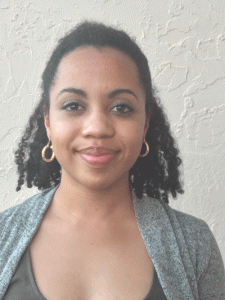
Q: What building evoked a strong reaction from you recently—either positive or negative?
A: It has yet to be completed, but the design for the National Museum of African American History and Culture, Washington, D.C., by Freelon, Adjaye, Bond/Smith and Group JJR really struck me. The symbolism is clear in the building’s form.
Q: What is the last book you read?
A: The Kite Runner by Khaled Hosseini. Once I started it, I couldn’t put it down.
Q: How did you discover your passion for architecture?
A: Both my parents (neither of whom are architects) led me to this passion. I watched my father design our house and was fascinated by the process, and my mother started the tradition of driving around looking at houses and buildings whenever we were out and had time to kill.
Q: What is your favorite thing to do to relax?
A: Watch movies or TV shows. The creators of Netflix have simultaneously enriched my life and stolen my time.
Q: What advice do you have for aspiring architects?
A: Architects can shape cultures and lifestyles: don’t take that for granted and the learning never stops – embrace it, it’s wonderful.
Kelsey Oesmann
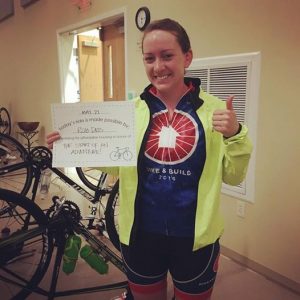
Kelsey is currently biking across America with Bike & Build, to raise funds and awareness for affordable housing.
You can follow her trek at https://coasttocoastkelsey.com/
Watch for her answers to the 5 questions later this summer!
Kevin Svensen
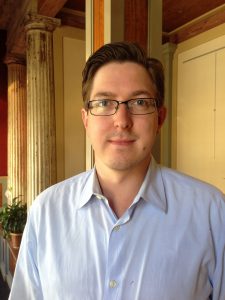
Q: What building evoked a strong reaction from you recently—either positive or negative?
A: While in Rome my wife and I attended a traditional Baroque concert at Sant’ Agnese in Piazza Navona and I had never experienced beauty so fully before. Being surrounded by Classical Baroque architecture, painting, sculpture and music delighted all the senses in an amazing way. It was a spiritual experience I did not expect going into it.
Q: What is the last book you read?
A: I read a lot of children’s books these days to my 2 ½-year-old daughter Linnea. The last I read was The Very Hungry Caterpillar among many others.
Q: How did you discover your passion for architecture?
A: I have wanted to be an architect for as long as I can remember. That passion was developed through art, woodworking and construction. I have always been curious about how things go together.
Q: What is your favorite thing to do to relax?
A: I enjoy traveling, which mostly consists of finding beautiful places and cities to enjoy good food, wine, and coffee.
Q: What advice do you have for aspiring architects?
A: Travel, especially to Europe, and never stop drawing.
Kyle Springer
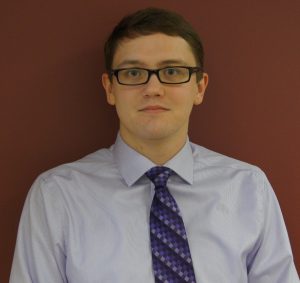
Q: What building evoked a strong reaction from you recently—either positive or negative?
A: The Whitney Museum
Q: What is the last book you read?
A: Wolf in White Van by John Darnielle
Q: How did you discover your passion for architecture?
A: I found my passion while my father built an addition on his house. Watching the process go from sketches to something real was quite transformative to the way I saw buildings.
Q: What is your favorite thing to do to relax?
A: Record shopping
Q: What advice do you have for aspiring architects?
A: Travel. I don’t think it’s possible to see too much.
Lauren McQuistion
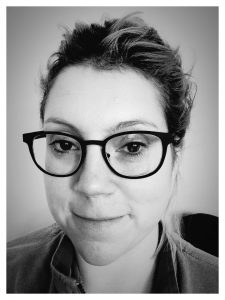
Q: What building evoked a strong reaction from you recently—either positive or negative?
A: Marcel Breuer designed the original Whitney Museum in New York City in 1966. It recently reopened as the Met Breuer after the Whitney as an institution relocated to a new Renzo Piano building. Some people hate the original Breuer building. Some people love it. I happen to love it so much I found a way to make it the focus of my graduate thesis, and I’m so glad it’s finally open again and full of art! If you haven’t ever seen images or details of the staircase, look it up.
Q:What is the last book you read?
A: Detroit City is the Place to Be by Mark Binelli
Q: How did you discover your passion for architecture?
A: My dad is an architect. I grew up around drafting boards and trace paper. I suppose going to the office with him on Saturday mornings as a little kid should have been a foreshadowing of all the hard work and long hours that go into this profession, but at the same time, that challenge to work hard and constantly learn and grow is exactly what I enjoy the most about it.
Q: What is your favorite thing to do to relax?
A: I read. A LOT.
Q: What advice do you have for aspiring architects?
A: Stick up for yourself and the things you believe in. Don’t be afraid to take chances in your design work and you career path. Listen and learn as much as you can about as many things as you can even if it doesn’t seem directly relevant to architecture. And ask questions. Lots of questions.
Luke Stearns
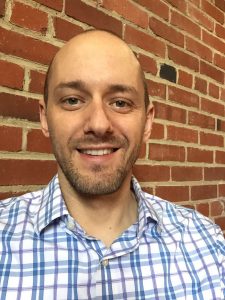
Q: What building evoked a strong reaction from you recently—either positive or negative?
A: Philharmonie de Paris, Jean Nouvel. Not without some controversy and construction challenges, this definitely still evoked a positive reaction.
Q: What is the last book you read?
A: Seven Eves by Neal Stephenson. I have a soft spot for well-written science fiction.
Q: How did you discover your passion for architecture?
A: While studying abroad as an undergraduate in Budapest, Hungary I grew increasingly passionate about the architecture that surrounded me there and on my travels.
Q: What is your favorite thing to do to relax?
A: Hiking in the mountains and working in my shade garden have recently been my favorite ways to relax.
Q: What advice do you have for aspiring architects?
A: Walk. Slowing down allows us to notice things that would otherwise buzz by in anonymity. Take the time to see the world around you and explore to find as many different worlds as you can.
Michael Chapa
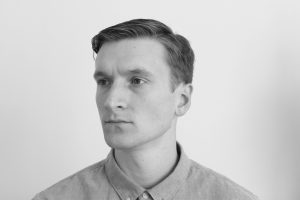
Q: What building evoked a strong reaction from you recently—either positive or negative?
A: When I first visited New York City I took a train and arrived through Grand Central Station and was awestruck by the grand hall. I recently visited Calatrava’s new World Trade Center hub and it took me back to that moment. I still feel humbled and challenged to build something as gripping.
Q: What is the last book you read?
A: The Food Lab by J. Kenji Lopez-Alt
Q: How did you discover your passion for architecture?
A: I had a great art teacher in high school who patiently taught a friend and I the fundamentals of collage and composition. A few weeks into architecture school I made the connection between those lessons and our studio assignments. (Thanks, Ms. Malbon!) I’ve lost and found it another 100 times since then, but that was the first.
Q: What is your favorite thing to do to relax?
A: I crave variety and I fight every day against routine, though cooking is the one thing I will do to tune out everything else. I have no problem spending three or four hours on a weeknight making an amazing meal, practicing with a new ingredient, or learning a new technique.
Q: What advice do you have for aspiring architects?
A: Do what you want to do.
Robert Crawshaw

Q: What building evoked a strong reaction from you recently—either positive or negative?
A: I am constantly inspired by the work of those that put as much time into the detail as they do the form. There are a few firms out there that are starting to mix fabrication into their design culture; if you can resolve the level of ornament needed on a stand-alone piece of furniture, you likely can translate that into emotional environments.
Q: What is the last book you read?
A: As a proud Hampton Roadsteader, most of my “reading” is on CD…in traffic. Lately, I have been listening to the speeches of Martin Luther King, Jr. for his ability to find center.
Q: How did you discover your passion for architecture?
A: Every summer my family would visit my grandparents and we would stay in a house my grandfather built on a steep slope overlooking a lake. From the front door, you could see the window wall at the back of the house but the transparency was less about looking out over the water and more about drawing you into the house with the sky.
Q: What is your favorite thing to do to relax?
A: Whenever I find time to devote to myself, I like to learn some new skill applicable to arts in general; not to master, but to increase my appreciation for those that have mastered and have a better understanding of what my hands can do.
Q: What advice do you have for aspiring architects?
A: There are few things I appreciate more than my parent’s insistence on me developing my writing skills; not just for the compositional outcomes, but the analytical mindset required to cultivate and convey an argument. Couple writing with a willingness to get your hands dirty through art and fabrication and anyone could have an incredible career.
Simone Saidel
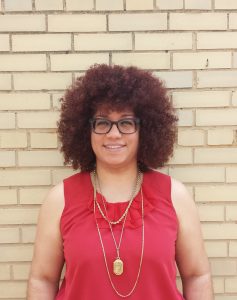
Q: What building evoked a strong reaction from you recently—either positive or negative?
A: Barnes Foundation, Philadelphia, PA (very positive reaction)
Q: What is the last book you read?
A: Ballast ARE 4.0 Structural Systems
Q: How did you discover your passion for architecture?
A: I began asking for house tours at a young age. I was fascinated by how people lived in their homes. The requests for building tours followed shortly after.
Q: What is your favorite thing to do to relax?
A: Listening to music
Q: What advice do you have for aspiring architects?
A: Don’t be afraid to speak up and ask questions. Your knowledge base increases and it will help you find your voice.

